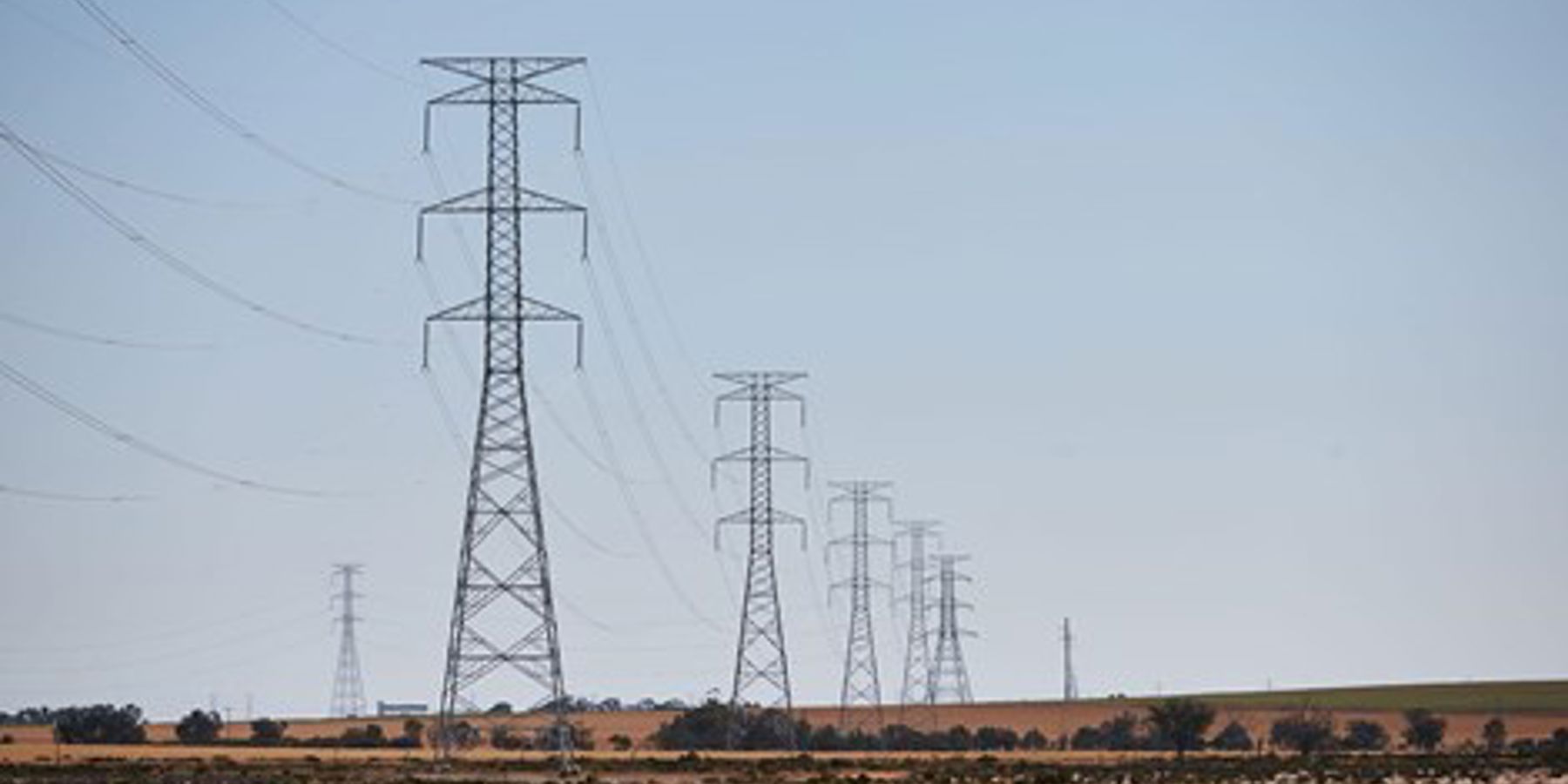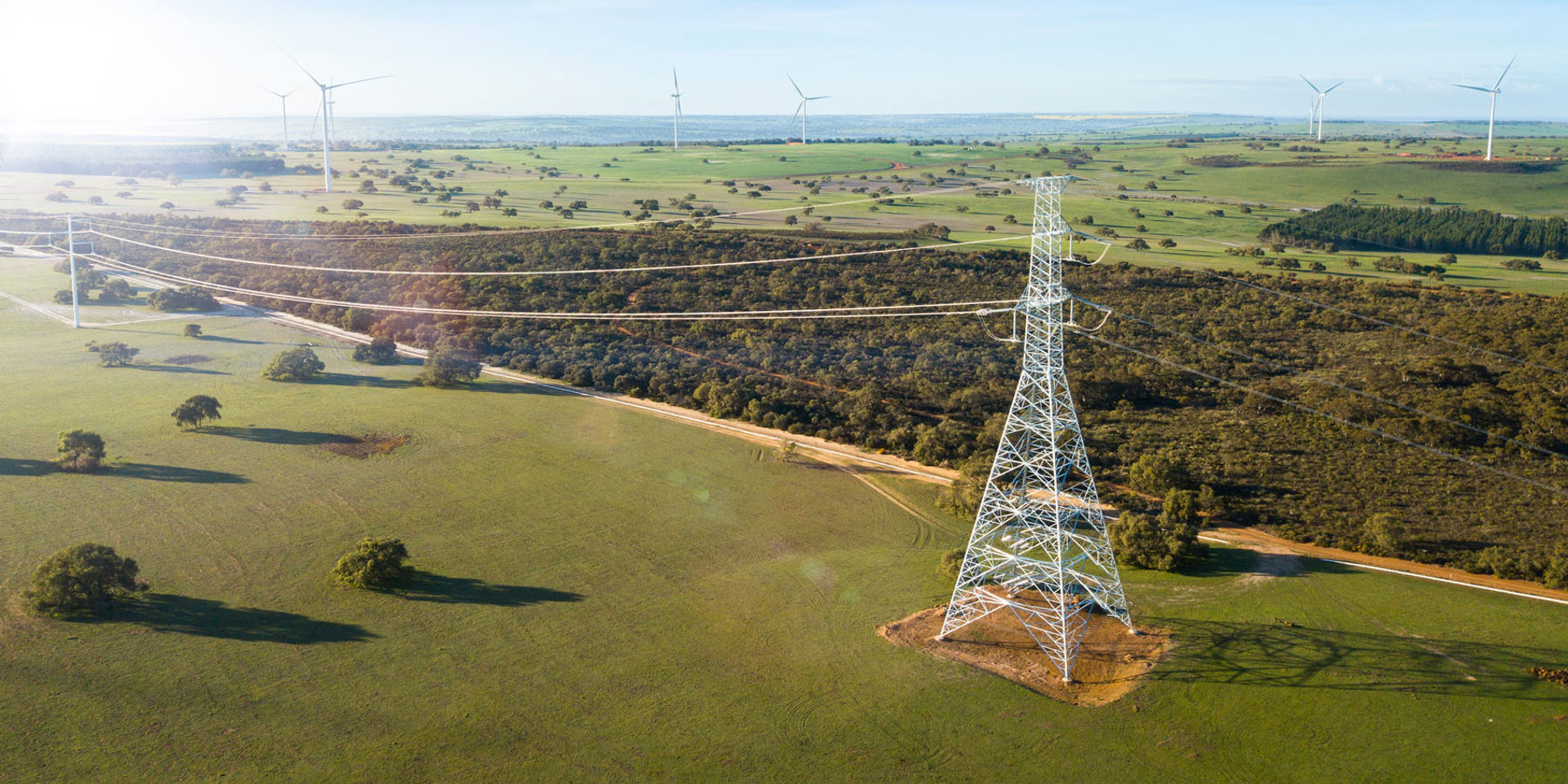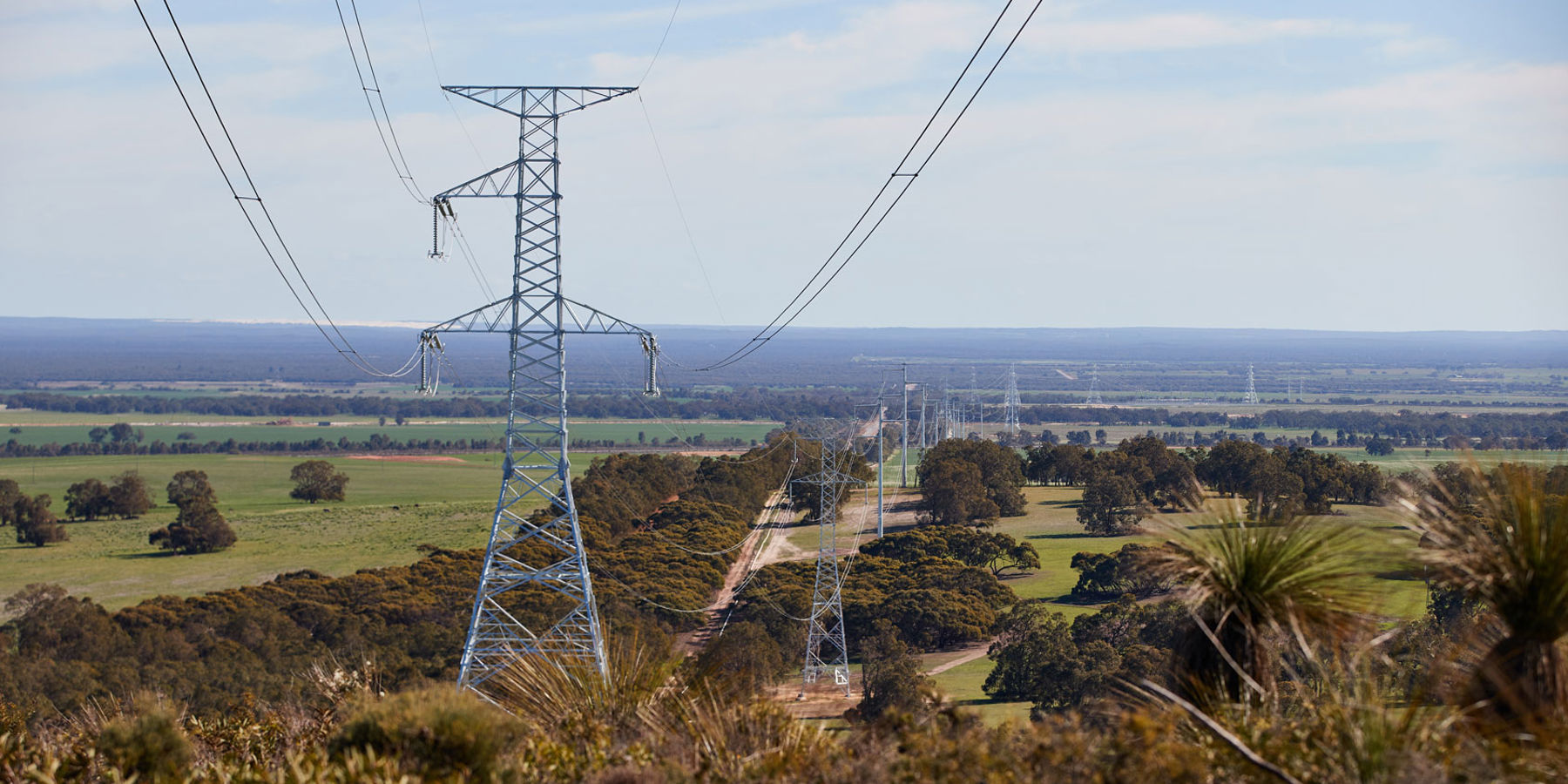Transmission refers to energy infrastructure that works in a similar way to the highway of the state’s road network, taking very large amounts of power, up to the voltage of 330kV from big generators, and transferring it via towers and wires to the network to reach customers.
In the network there is more than 7,600km of transmission circuit feeding power into the SWIS.
The transmission system takes power from coal and gas generators and renewable sources like large wind and solar farms and transfers it in bulk to several substations. From there energy is transferred into the distribution system, with voltage being reduced at each stage to a safe level suitable for properties and appliances.
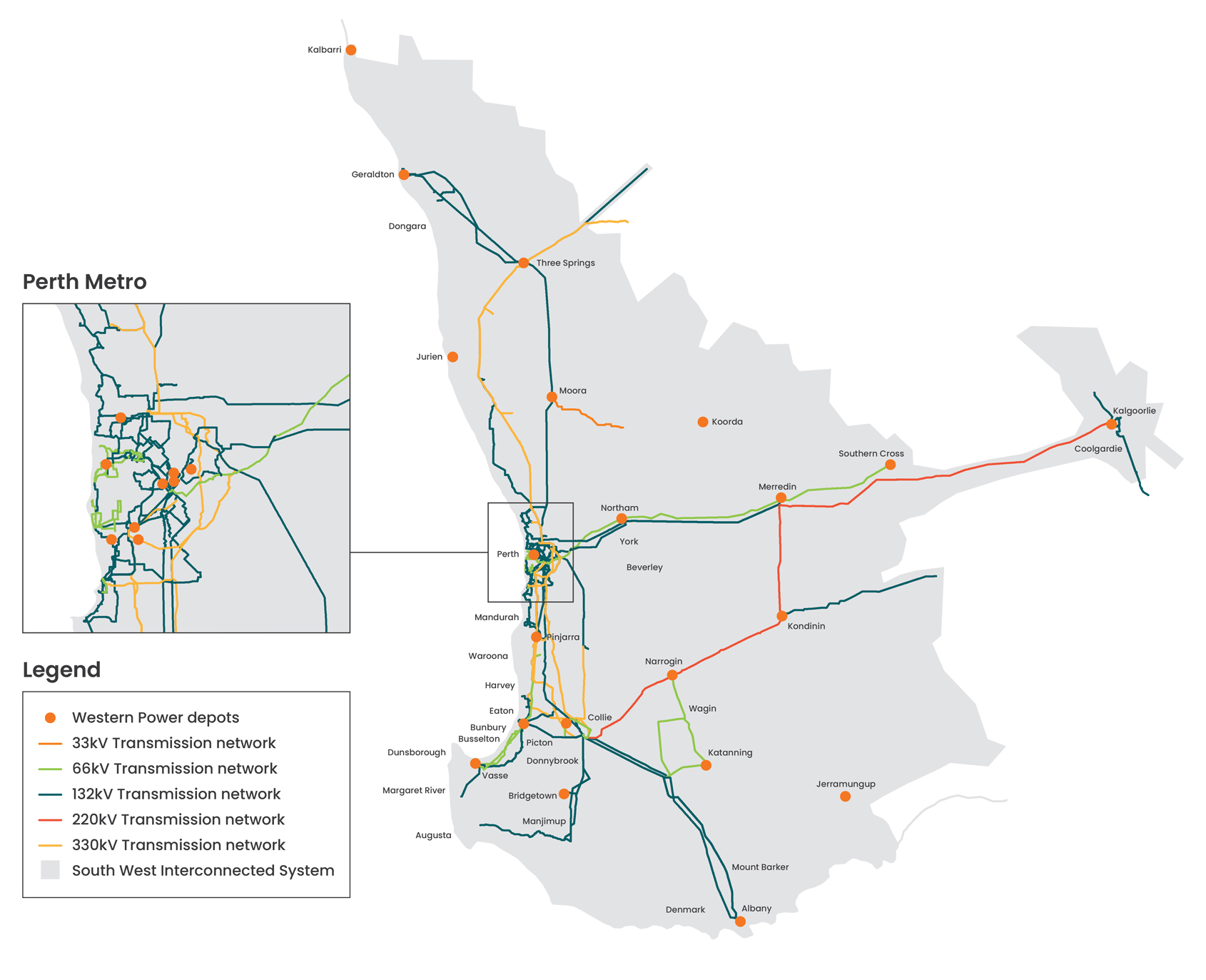
Transmission – what does it look like?
Transmission networks are the largest structures within our energy grid. Bigger than the poles and wires you see on streets that are part of the distribution network, transmission infrastructure typically consists of large lattice tower and steel/wood poles that can safely carry high voltage power in bulk. Transmission is generally not run underground because of its substantially higher cost.
In the traditional network system, most power comes from individual large generators with transmission infrastructure running from a smaller number of locations and feeding into the grid. However, the increase in the demand for large-scale renewable energy generation is changing the way transmission needs to be structured.
Transforming transmission for renewables
As more wind and solar farms come online and are connected to feed large loads on the network, our transmission infrastructure needs to be expanded to enable the linkage to a larger number of locations, increasing flow of clean energy to be effectively and efficiently fed into the system.
Wind and solar installations tend to be placed in locations where the conditions are right to generate power, which is not always close to existing transmission infrastructure.
This means that over the coming years we'll need to significantly expand our transmission network to facilitate more renewables into the network and decarbonise our energy system.
Transmission expansion - the future
Western Power is well prepared for future transmission expansion that is forecast in the coming years to meet the need from industrial customers as they electrify their processes as part of decarbonisation efforts.
The State Government's SWIS Demand Assessment (SWISDA)- affirmed the strategic and planning work we're undertaking in transforming the network to deliver a cleaner energy future for the community.
SWISDA sets the groundwork for the State Government to progress consultation and collaboration with existing and new industrial users to inform future network investment and provides an understanding of industry changing demand for low-emissions electricity supply on the SWIS.
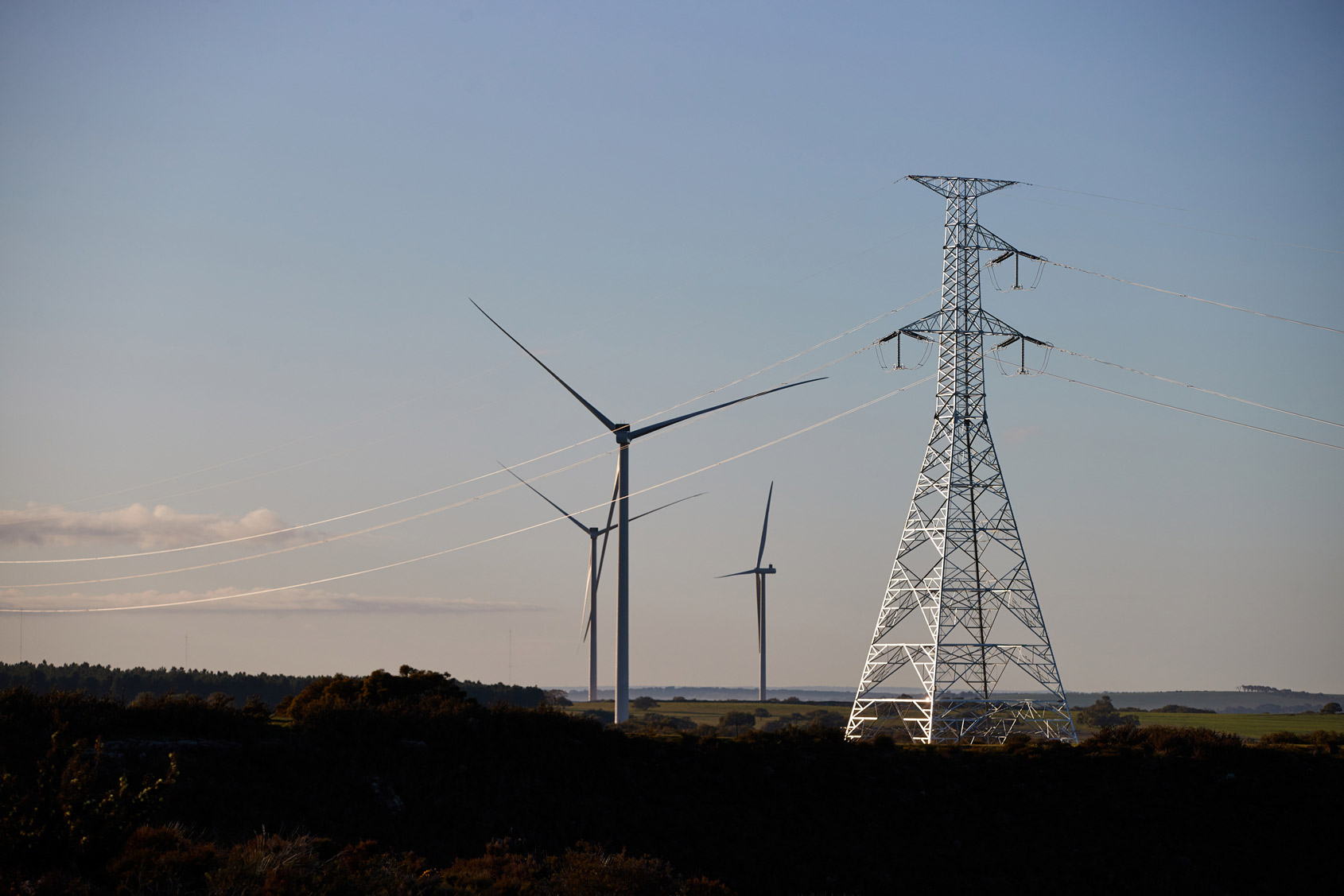
We provided modelling and forecasting as a member of the SWISDA taskforce to identify the extent of possible transmission network augmentation required to meet projected industry demand for energy from the SWIS.
Modelling showed an additional 7.2GW of new industry electricity demand is expected to occur in the SWIS by 2042, which could require over 50GW of new generation and storage, on top of the existing 5.9GW of generation capacity in the SWIS.
In preparation for transmission growth, Western Power has already identified early work and the additional $126M provided in the State Budget will support planning works in the highest anticipated growth areas, being the northern, central and eastern corridors of the SWIS.
The funding will support planning and purchase of long-lead items for initial upgrades in the north network, which is expected to see a boom in new energy projects, as well as upgrades in the east network.
SWISDA supports our preparation for transmission network expansion to enable industrial decarbonisation, service renewable generation and support local economic growth across the State as WA moves towards achieving net zero.
The South West Interconnected System Demand Assessment (SWISDA) affirms the strategic and planning work Western Power is undertaking as it continues to transform the network to deliver a cleaner energy future for the community.
